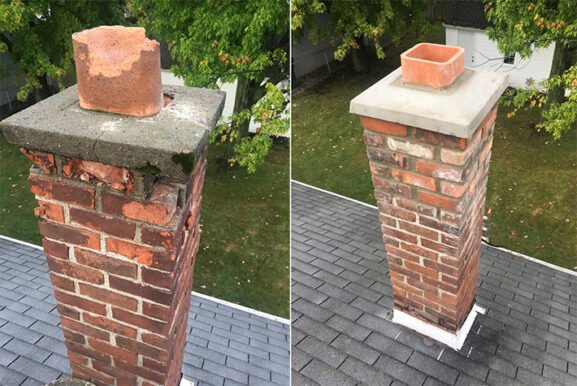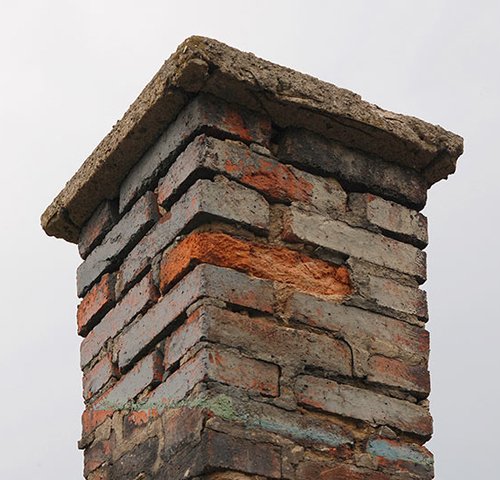Why Timely Chimney Flashing Repair Can Save Your Roof from Major Water Damage
Key Takeaways
- Damaged chimney flashing is a common cause of hidden roof leaks and costly interior water damage.
- Identifying early signs like rust stains, water stains near the chimney, or missing caulk can help prevent more serious structural issues.
- Repairing or replacing flashing requires proper sealing techniques and material compatibility to ensure long-term effectiveness.
- Routine roof and chimney inspections can help spot flashing issues before they escalate into major repair projects.
Understanding the Purpose of Chimney Flashing
Chimney flashing plays a critical role in keeping your home dry by forming a waterproof seal between the chimney and the roof. This seal prevents rainwater and melting snow from seeping into your attic, ceiling, or walls. It’s made from materials like aluminum, galvanized steel, or copper, and is layered in a way that guides water away from the chimney structure.
Over time, flashing can fail due to weather exposure, improper installation, or general aging. When this happens, water finds its way in, often without immediate detection. Because the leak path isn’t always obvious, homeowners may only discover the problem after interior damage becomes visible.
Common Signs Your Chimney Flashing Needs Repair
Knowing what to look for can save you from expensive home repairs down the line. Here are several signs that indicate your flashing may be compromised:
- Water stains on ceilings or walls near the chimney
- Visible rust or corrosion on flashing materials
- Cracked or missing caulk where the flashing meets masonry or shingles
- Loose flashing sections, especially after strong winds or storms
- Damp smells in the attic or near the fireplace
If you notice any of these issues, it’s important to act quickly. Even small flashing gaps can let in enough moisture to cause mold growth, rot framing, or weaken the chimney structure itself.
Causes of Flashing Damage Over Time
Even the best flashing installations can deteriorate. Harsh weather conditions, shifting rooflines, and poor installation are the most frequent causes of damage. In areas with freezing temperatures, water can infiltrate tiny cracks and expand when it freezes, loosening the flashing over time. Similarly, high winds or settling foundations can shift roofing materials just enough to break the flashing seal.
Animals and pests can also contribute. Birds or rodents nesting near the chimney may displace or damage flashing materials, leading to gaps or holes. Finally, roofers unfamiliar with chimney systems might use incompatible materials or incorrect sealing methods that reduce durability.
How Chimney Flashing Is Repaired
Flashing repair can range from sealing small gaps to replacing entire sections of metal. A qualified technician will first inspect the flashing for rust, lifting, or deterioration. Minor cracks may be sealed using high-quality roofing caulk, while more severe damage may require full replacement of the step and counter flashing components.
The repair process generally involves:
- Removing old or damaged flashing
- Cleaning and preparing the surrounding area
- Installing new metal flashing pieces in layers to maintain waterproofing
- Sealing joints with durable, weatherproof caulk
- Ensuring the flashing integrates correctly with both the chimney masonry and roof shingles
For historic homes or those with custom roofing, material choice is especially important. Copper is often used for its longevity and compatibility with older structures. Regardless of material, proper overlap and slope are crucial to keep water flowing away from seams.
The Importance of Professional Inspection
Many flashing problems go unnoticed because the signs are subtle at first. A professional roof and chimney inspection can reveal hidden vulnerabilities that homeowners might miss. Inspectors look for early signs of corrosion, sealant failure, or installation errors, and can assess whether a repair or full replacement is the best course of action.
According to the National Roofing Contractors Association (NRCA), homeowners should schedule roof inspections at least twice a year—ideally in the spring and fall. This helps catch flashing issues before winter snow or summer storms create more significant damage.
Why DIY Flashing Repair Can Be Risky
It may be tempting to tackle chimney flashing repair as a weekend project, but doing so without the proper knowledge and tools can lead to bigger issues. Installing flashing requires an understanding of roofing angles, waterproofing techniques, and appropriate sealants. If not installed correctly, DIY flashing may fail within months, leading to water intrusion and further repairs.
In some cases, incorrect flashing work can void roof warranties or fail local building codes. For these reasons, it’s best to rely on experienced professionals who understand how to work with both chimney masonry and roof systems.
Best Practices for Long-Term Protection
Once your chimney flashing is repaired or replaced, a few best practices can help preserve its integrity:
- Keep gutters and downspouts clean to prevent water overflow near flashing
- Trim nearby tree branches that could scrape or damage roofing materials
- Monitor attic areas during storms for early signs of leaks
- Schedule annual inspections, especially after heavy storms or snow accumulation
If you live in a region with frequent freeze-thaw cycles or heavy rain, consider investing in upgraded flashing materials like copper or stainless steel. These offer better corrosion resistance and longer lifespans compared to basic galvanized steel options.
Final Thoughts on Protecting Your Roof with Proper Flashing Maintenance
Taking chimney flashing seriously can prevent a host of problems that go far beyond a few drops of water. From protecting your home’s structure to maintaining air quality and energy efficiency, this small detail plays a big role in overall roof health. Whether you’re planning preventive maintenance or addressing a leak that’s already appeared, timely attention to chimney flashing is a smart investment in your home’s future.

